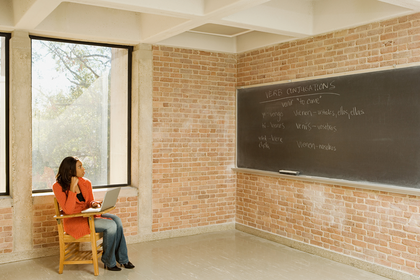Loading...

Democratizing Student Well-being
David Jakes
The impact of the worldwide pandemic on students and their learning most likely won’t be known for years, although it is obvious there are clear challenges ahead. These challenges are related to the health and welfare of students, present before the pandemic, but now amplified and intensified after two and half years of the societal dysfunction brought about by COVID-19. These challenges directly relate to education’s ability to support the wellness choices of students and create the environments and conditions that can engender student well-being.
To understand the relationship between wellness and well-being, we can begin with two definitions. The Global Wellness Institute defines wellness and well-being as:
Wellness:the approach to lifestyle choices, typically by deliberate effort, that leads to a healthy life or higher state of being.
Wellbeing:a person’s subjective perception of their existence, a state characterized by the satisfaction of life circumstances, health, happiness, and prosperity.
Basically, wellness relates to the healthy choices a person makes that lead to the satisfaction they have with their life or what is called their well-being.
Well-being, and achieving it, is rooted in the ability of a person to make the choices necessary to get there. It follows that a school that wishes to promote student well-being should promote student choice in their daily experience.
That’s not necessarily an easy thing to do. Consider the culture of schools and the typical school day and classroom. Students are assigned where to sit, they must have permission to talk or use the washroom, learning opportunities are created for them, and their day is filled with moving from space to space dictated by the ringing of a bell.
To understand how to make the right choice you first have to have the ability to make choices. In an environment where choices are made for you, you’ll never have the opportunity to develop the ability to make the right one. For students, schools are not necessarily the best places for making choices about how they experience their day and about how their choices contribute to their well-being.
So, to promote conditions for well-being to emerge, schools must democratize choice. Students must be granted agency to make the choices that can lead to the ownership of their school experience.
You can start with democratizing choice by rethinking how space and choice are applied to student learning and to the attainment of well-being. Here are several options for creating spaces students want to spend time in and can contribute to their well-being:
- enabling choice regarding where they learn in the classroom. It’s time to rethink constraining seating charts!
- enabling choice regarding who they learn with, and how space can support relationship-building.
- enabling choice in how the environment can be shaped by them to support their learning
- enabling choice by making the classroom resource-rich (technology, whiteboards, paper and marker supplies, etc.), and allowing students to select the tools they would like to learn with.
- and the most important thing you can do to promote choice and learning spaces. Ask kids about space. They inhabit school spaces every day for typically 186 days. They know everything about space and how it impacts them - trust me. Ask them how you can help create a space that works for them. You’ll be amazed at their suggestions.
These strategies can help forge a new classroom culture based on choice. Good teachers will create opportunities for choice, help students make the right choices, and then help them be reflective on why they made a particular choice and if it was beneficial or not.
The attainment of well-being demands students have the ability to make their own decisions. Democratizing well-being means democratizing choice. Schools can provide the opportunity and help shape students' ability to make the decisions that lead to well-being at the age when this might be the best thing they can ever learn.